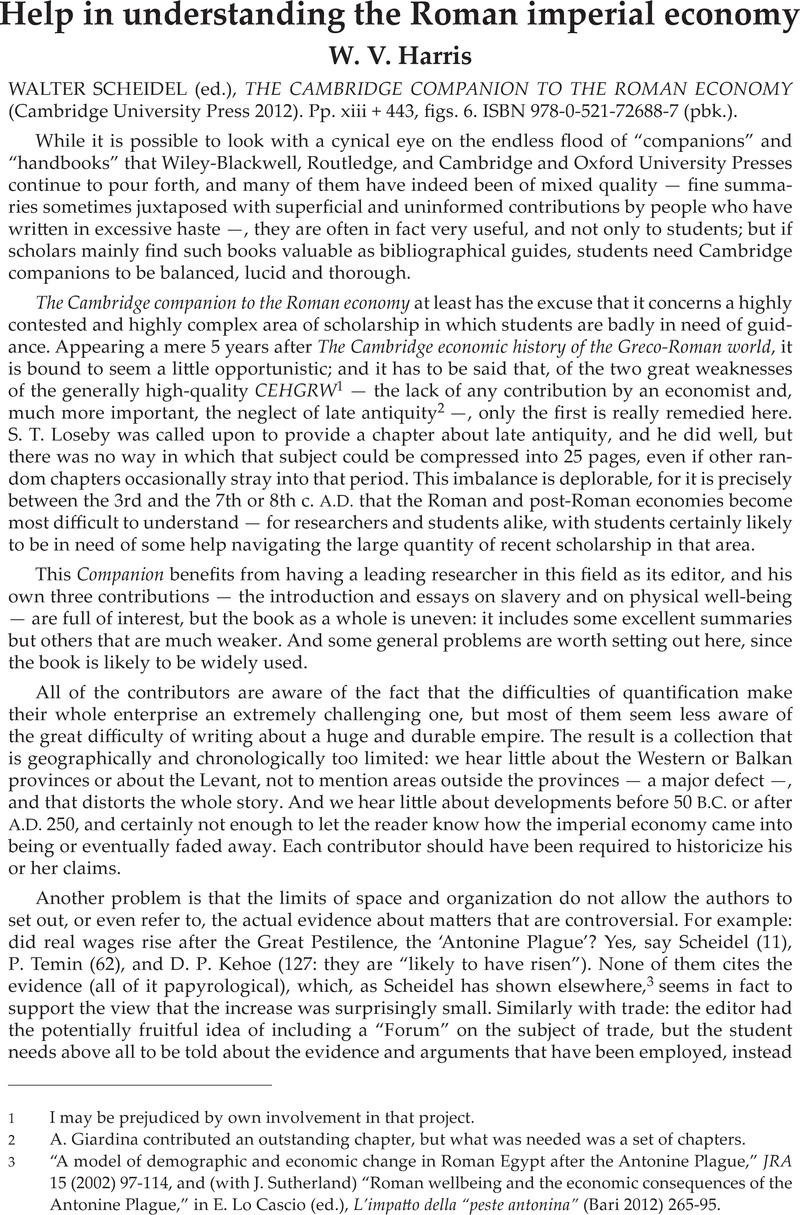No CrossRef data available.
Published online by Cambridge University Press: 27 November 2014

1 I may be prejudiced by own involvement in that project.
2 A. Giardina contributed an outstanding chapter, but what was needed was a set of chapters.
3 “A model of demographic and economic change in Roman Egypt after the Antonine Plague,” JRA 15 (2002) 97–114 Google Scholar, and (with Sutherland, J.) “Roman wellbeing and the economic consequences of the Antonine Plague,” in Cascio, E. Lo (ed.), L'impatto della “peste antonina” (Bari 2012) 265–95Google Scholar.
4 A rather poor index makes the book harder to use.
5 And in this volume P. Erdkamp expresses “much sympathy for … the primitivist approach to the ancient economy” (243).
6 It does not put a reviewer in a good frame of mind to see his opinion misrepresented, as on 29 (on the subject of taxation).
7 See my article “Literacy and epigraphy II,” in Apicella, C. et al. (edd.), Les affaires de Monsieur Andreau. Économie et société du monde romain (Bordeaux 2014) 290–95Google Scholar.
8 Slavery in the Late Roman World, AD 275-425 (Cambridge 2011)Google Scholar, with review by Grey, C. at JRA 25 (2012) 932–38Google Scholar.
9 “A model of demographic and economic change in Roman Egypt after the Antonine Plague,” JRA 15 (2002) 97–114 Google Scholar.
10 “Growing up Roman: infant mortality and reproductive development,” J. Interdisc. Hist. 44 (2013) 1–35 CrossRefGoogle Scholar.
11 Work in the city: Roman artisans and the urban economy (Chicago 2006)Google Scholar.
12 Bang also adopts from NIE the misleading piece of jargon, “rent-seeking”; he even takes over from Mancur Olson the silly expression “stationary bandit”, referring to the state.
13 “Economy and society, 133-43 B.C.,” in Cambridge Ancient History IX (2nd edn., 1994) 634–35Google Scholar.
14 Delia, D., “The population of Roman Alexandria,” TAPhA 118 (1988) 275–92Google Scholar.